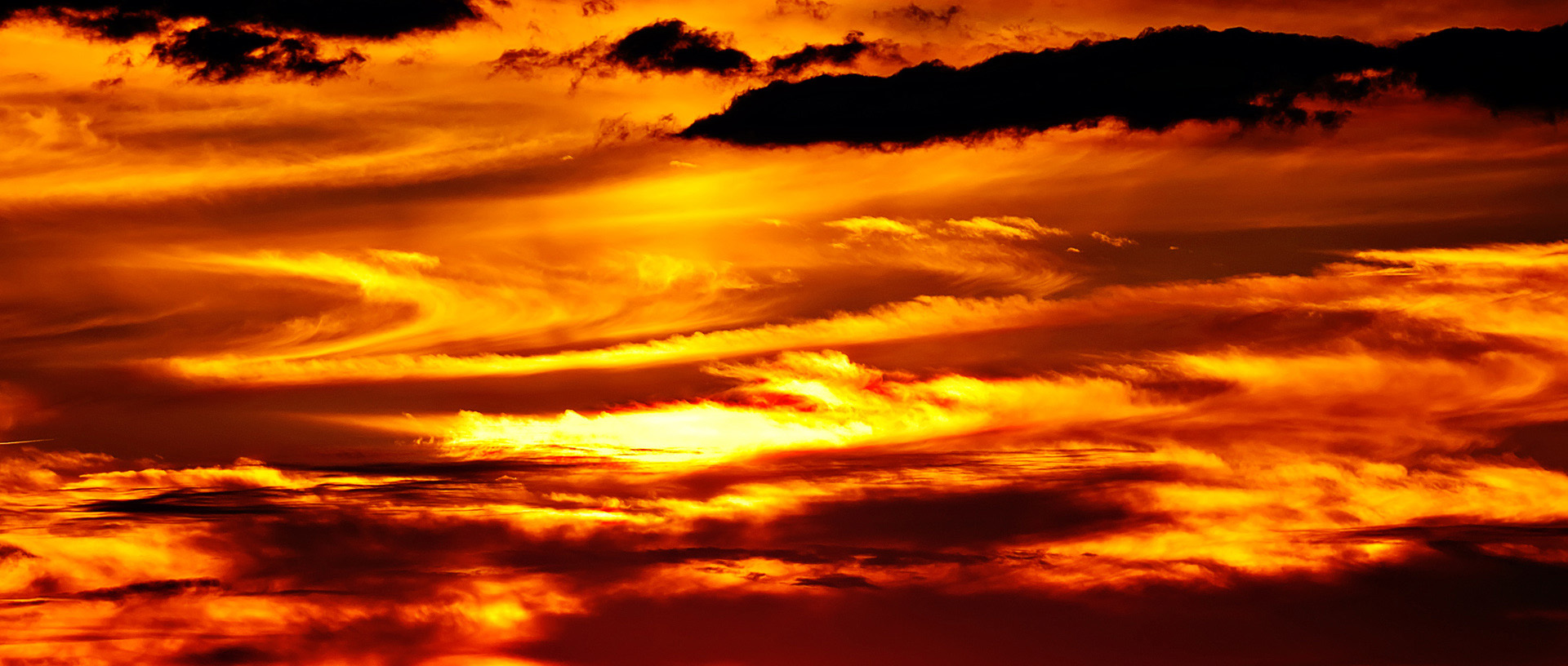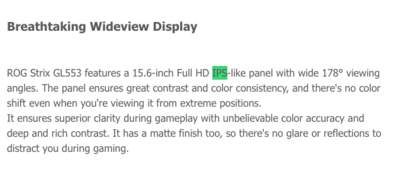-
Posts
4,093 -
Joined
-
Last visited
-
Days Won
49
Everything posted by Brian
-
What camera are you shooting with? How large is your typical .psd file? Do you do a lot of duplication of layers and then flattening? What year / make / model is your iMac? I'm wondering if we could get it to 16GB and go for broke and upgrade to Sierra.
-
Also, to keep LR at a performance maximum, you need to have small catalogs. Not one that contains 30,000+ images, but one for each project or have separate Personal / Business catalogs. It's when you have a giant catalog do things slow down. Plus, it seems with each new version of LR, it just gets slower and slower. All those features and "stuff" they keep adding seems to have slowed the engine driving LR down.
-
Well, performance wise, a SSD Drive will be the better option, but with some drawbacks. If it were me, I'd put it on the 3TB HDD. LR Catalogs can get quite LARGE over time and if something were to go wrong, it's much easier to recover data off a traditional HD than a SSD. Also, you'd only notice a performance gain when LR is accessing the catalog, for LR to really shine, you need to have a beefy fast CPU, lots of RAM (16-32GB) and a video card with its own dedicated video memory. (2GB, preferably more.) In the grand scheme of things, when it comes to Lightroom, you really aren't worried about the speed of the HD, just everything else.
-
It might be better long-term to put money aside for a new Mac, since you can't seem to stop. Besides, all the extra features that come with a new OS, you really need a current computer to take advantage of them anyways. Just a thought.
-

Question about your laptop recommendation
Brian replied to Mariann Wilson's topic in The Windows & PC Hardware Forum
Here is the thing with laptops...the models only last about 3 months until they are replaced by other models. So it doesn't surprise me that the model that I linked to is no longer available. That said, it is a good model specification / feature-wise to look at the current models. Use them as a guide. Gone are the days of having a Spring-Line / Fall-Line, well Apple seems to keep with this tradition, now it's a "You see it, like it...well buy it. Because it won't be available next week..." type of thinking. Laptops these days, ones that are under $500 I'd expect to get 12-18 months of life out of them, ones that are around $1000 (give or take,) about 3 years. Even fancy $4000 MacBook Pros I'd only expect 3-4 years out of them. Of course there are exceptions, but my remarks stand. -

Question about your laptop recommendation
Brian replied to Mariann Wilson's topic in The Windows & PC Hardware Forum
I like that it has a Matte Screen, but it's not a true IPS panel. (IPS-like panel.( From Asus' website: Thoughts @Damien Symonds? -
A 6D Mark II, I haven't heard much, though I haven't looked either. What really bothers me with a 6D is the focus points. The strongest / most reliable one (cross-type) is the center focus point. So unless Canon does something dramatic in the focusing system dept., I still won't recommend one. It's 2017, not 2005.
-
Probably because A1 & A2 is set to focus. I like having my camera set to only take the photo when it feels that the subject is in focus. You might have to set both to release or focus / release.
-

Your system has run out of application memory
Brian replied to Gena's topic in The Macintosh User Group
You don't click on it to open it? Safari is like Internet Explorer. It's part of the MacOS. I'd just leave it alone. When you install Firefox, it will ask you if you want to import stuff. Tell it yes. Then just put Firefox on the Dock Bar. -

Your system has run out of application memory
Brian replied to Gena's topic in The Macintosh User Group
I'd give this a read: https://www.macissues.com/2015/06/22/how-to-fully-reset-safari-on-your-mac/ -

Your system has run out of application memory
Brian replied to Gena's topic in The Macintosh User Group
Safari is botched up. It's a memory hog on a normal basis and it seems like you have a problem with it or your one or more browser plug-ins / extensions are screwed up. I'd download and install Firefox. -
I've got nothing. I'd contact Intous next.
-
Here is the thing with 4K screens: The PHYSICAL AREA REMAINS THE SAME. It's either 14" - 17.2" - 15.1" whatever. All the manufacturers have done is cram more pixels into the same physical area. Things are TINY on a 4K display. Then you have to zoom in to make things look "Normal." Know what happens when you zoom in? Things look crappy, especially your photos. I completely agree with Damien: 4K is Poppycock. 5K is complete Bullfeathers. Unfortunately, marketing has taken over and this type of tech is here to stay. Case in point, I have a customer, who is a pediatrican's office. Two of the Doctors got new laptops with fancy 4K screens. Since their Medical Software isn't 4K ready, you have to lower the resolution in order for them to see the TINY icons, LOL!!
-
Photo Mechanic is the industry leading software for what you want to do and it works really well. The alternative is paying $9.99 a month (plus applicable taxes) to have PS CC. So let's round that to $12 a month, conversationally speaking. After 12 months at $12, that's $144. So in a sense are paying $150 either way, or close to it, after a year.
-
Life is so much easier with a card reader. Trust us.
-
The main question should be is, are you doing this professionally or is it just a hobby? If you are shooting professionally, then time is money and I would certainly recommend upgrading to the full version of PS CC for $9.99 a month, which includes Bridge. For a hobby, it's really up to you. If you take lots of photos, wasting hours trying to find things is kinda nuts. The only real way to get around not using Bridge or a similar software (free or otherwise) is to have a rock-solid organizational file structure. Then all you would need is something like Raw Right Away to view the Photos while searching through the hard drive. As far as Canon, they have their own viewer software. Your camera should have came with a CD that had the viewer software that I'm talking about, so look for what it's called and download the current version from Canon's Website.
-
Finally, if you own a Mac, the Mac OS is based on a old operating system from the 1970's, called Unix. (Pronounced You-Nicks). The Mac OS treats devices like EHD, CD-ROM/DVD-ROM, CF/SD Readers as physical hard-wired devices to the computer. It's like they are all hard drives. Transferring Photos on a Mac almost REQUIRES some sort of reader, unless you enjoy hating life and making things difficult for yourself. If that's the case, have at it. LOL!! But seriously, if you have a Mac, please use a Card Reader.
-
Speed. Card Readers are often A LOT faster than any camera, unless you have a fancy $6000+ Pro Grade Body and has an Ethernet Port built in. Possible Battery Failure during transfer. I know, this is rare, but it's plausible. Even though you may not be doing anything, if your camera is hooked up to the computer, it's using the battery. If that dies during transfer, you could have a scrambled card. Bent Pins in a CF slot. One of my famous quotes applies here, "...The First Law of Human Ingenuity: At first it doesn't fit...shove it in harder." Bent pins suck. I know, as time goes on and we move away from CF (Pin-Style Media) this type of failure will eventually go away. While we wait for another 10+ years for that to happen across the board, I will reiterate...BENT PINS SUCK. They cause all sorts of damage to CF cards. You know what's worse? Bent Pins in the CF Slot on the camera! I personally know of one photographer who blew up three cameras due to a bent pin in a slot during a Wedding. Card didn't work in Camera One. Took the CF card from Camera One and put it into Camera Two, which was the backup. Card was shorted from Camera One and blew up Camera Two. Photographer Grabbed 2nd shooter's backup camera and blew that one up. Again, bent pins suck. I hate wasting money, so which would you rather have, a $30 Card Reader Replacement or a $300 repair bill from your camera manufacturer? Now, I understand that lots of folks in here are just "Hobbyists" and only do this for "Fun" and have "...NEVER had a problem..." so I shouldn't be so "Serious" about this topic. I get it. After all, it's just photographs...we aren't curing cancer, or ending world hunger, right? I mean, it's not like photographs are important or anything like that in the grand scheme of things, right? RIGHT? Until they are. Until your luck runs out. Oh, give this article a read. Thom Hogan interviewed the ORIGINAL PROGRAMMER that came up with the idea for data recovery on CF Media. His software is the one that Sandisk uses and he has great insights on how to treat your cards. (Hint: NEVER DELETE IN-CAMERA.) Please read the whole thing. The Data Recovery Interview by Thom Hogan.
-
You can use Raw Right Away to view Raw files in the Finder. Photo Mechanic is also a popular and recommended tool, but it costs $150. If you shoot Nikon, you could use their free photo-viewer program, ViewNX. I personally use ViewNX and have for years. It's good for something basic, but as with practically all Nikon Software, it's buggy and is quirky...and it's free. I'm sure there are equivalent software products from the other camera manufacturers.
-
How long? Depending on the speed of your internet connection, I'd say roughly 1-2 hours total? Maybe less?
-
Re-read my answer above. Specifically... "OSX Mavericks was the last Mac OS that had the LEAST amount of problems with PS!!! If you can upgrade to Mavericks...DO IT!!!" Why not just go straight to Sierra? Because of weird quirky problems with PS. Since you make money from this computer (Remember, you can always upgrade to Sierra, but Mavericks...your situation is unique.) I'm really concerned. Hopefully Apple hasn't pulled the plug. If you can't update to Mavericks and are forced to upgrade to Sierra...guess what? You are going to Sierra. The only way to know is to try and see what happens. You should be able to click "Cancel" to stop the install procedure. I'm hoping you can go to Mavericks, but it's been a LONG time and with Apple, either you play by their rules or you don't play. Oh, Windows Peeps, Microsoft is doing this as well these days, so don't be so smug. Hell, they forced a Windows 10 upgrade on many computers in 2016 which resulted in businesses losing revenue. In fact, a Travel Agency sued Microsoft for screwing up their computers and WON. But I'm digressing here... I am personally running Mavericks 10.9.5 and iTunes 12.5.4.42, which I believe is the latest version of iTunes. My iPhone is running iOS 10.2. So I would upgrade to Mavericks, then update iTunes. Then update your iPhones / iPads to the latest iOS. Yep. You are kinda stuck. You are either going to have to upgrade, or since this machine generates income, purchase a new computer and transfer your iTunes library over to the new one. With a Time Machine Backup, once the TM EHD starts getting full, the Time Machine Software DELETES the oldest backup(s) to make room. Time Machine is not meant to be a complete and forever archival method, it's meant to be there if you accidentally delete something, restore a corrupted file, or to restore your main hard drive in case of failure. It's very good at what it's meant for. If you think Time Machine is to keep files forever...it is not. I'd just leave the TM drive alone and don't mess with it. Let the Time Machine Software handle things.
-

Turn off iMac monitor while using external monitor
Brian replied to FidoPhoto's topic in The Macintosh User Group
Nope. Not with a iMac.- 1 reply
-
- 1
-

-
I bought a used D700 a few months back. I added the D3s battery to the grip, so it shoots at 8fps now, which is helpful with my son's Baseball games. I also have the Nikon 14-24, 24-70 and 70-200 VR II to go with it. Those lenses make a BIG difference. Oh, and I'm not humble-bragging. It's taken me several years, more than one tax return, a loan (which is paid off) and several weddings / gigs to purchase the "Nikon Trinity." It was not easy, I had to find a way to make it happen. My next camera purchase is probably a used D3s in decent shape. The skin tones from a D3s are fantastic and it still holds its own for a camera that came out in 2009. If I were to upgrade to a camera body that had 24mp or more, I'd have to upgrade my 2009 iMac. So for the moment, I'm still living in 2009 technology-wise.
-
Believe it or not, I'm going to recommend that you use the old Apple Cinema Display! Reasons are as follows: It's an External Display. It stays at the same viewing angle until you change it. An External Display stays in the same area. You won't be editing from the couch, in bed, beside the pool, or the kitchen table...each with different color casts and type/quality of light. When you use a laptop, the angle of the display changes each time you open it. This can shift how you see detail in the shadows as well as in highlights. The Retina Displays tend to have higher resolutions, which make photos look crappy, especially during editing. I know, you can't get anything but a 5K screen these days, but with all that resolution in the same physical area, things appear smaller. So when you enlarge them to see what you are editing, it doesn't look as good. External Displays tend to be easier to Calibrate.
-
I found this on the internet, have you given it a try? The solution for this is to disable two settings that are on by default in Win7: "Press and Hold" and "Flicks". Open the Windows Control Panel and type "tablet" into the search field. Or if you have "Small Icons," proceed to step two. Select "Pen and Touch" settings. From the "Pen Options" tab, select "Press and Hold" and click "Settings..." Make sure "Enable press and hold for right-clicking" is unchecked. Click OK. Select the "Flicks" tab Make sure that "Use flicks to perform common actions quickly and easily" is unchecked. Click Apply, and OK.


